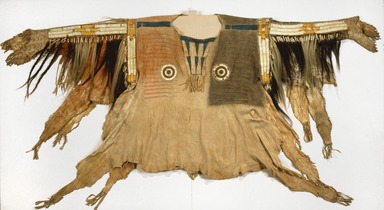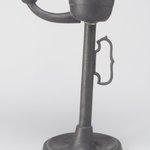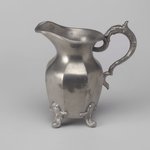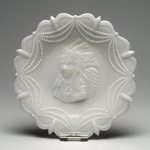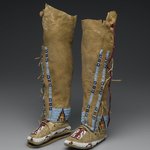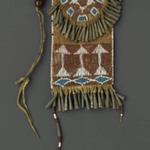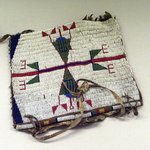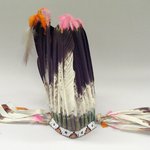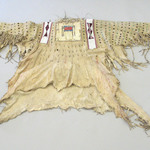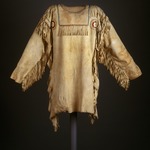Can you tell me more about the war shirt I'm a designer and I love the ornaments.

There are some really incredible details to the war shirt, for one, it's made from one piece of deer hide that is ingeniously folded and fashioned to create this draping style.
The porcupine quills are another fascinating detail. The traditional way of flattening them would be for the quill-worker to keep them in her mouth to keep them soft and pliable, and then flatten them with her teeth.
The long fringe could be an indication that the wearer was a storyteller, the fringe would move and sway, emphasizing the arm movements of the orator.
Also, the glass beads were some of the first beads introduced by non-Native traders to the Northern Plains in the early 1800s. They were called "pony beads" because they were transported by pony pack trains or "pound beads" because they were sold by the pound. Blue beads were popular because the color was rare in Indian dye sources. The combination of traditional quillwork and these beads indicates that the artist was a person of high social status whose family was able to trade for valuable materials.
What tribe does this belong to?

The shirt was created by a Sioux artist.
Is that local?
No. The Yanktonai, Nakota, Sioux live in the plains region of the United States. This object was collected in the 1830s at Fort Snelling, a US military outpost in Minnesota.
How are you able to preserve objects like this leather "Shirt for Chief's War Dress"?
That shirt in particular is not very old, dating to the early 19th century. In general, leather is a pretty durable material. Additionally, objects that have been specifically collected for museum contexts are very quickly subject to various conservation methods to preserve them, including climate and light control. As a part of our collection, this shirt wouldn't have been subject to the wear and tear of everyday life.
Tell me more.
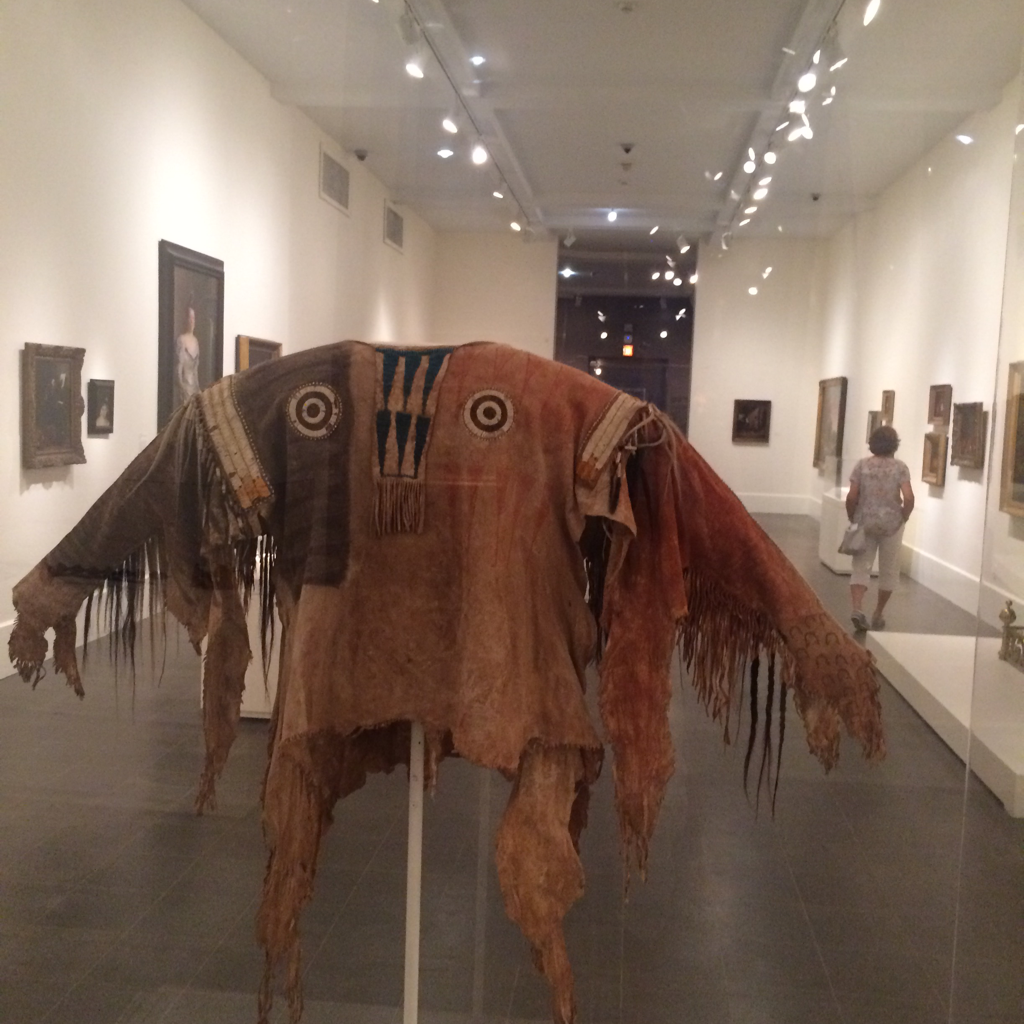
The war shirt would have been made by a woman for on specific male chief. The designs reflect the military history of the man who would have originally worn it and he may have further modified it through personalized embellishments as seen here. The lines along the colored areas are believed to be tally marks.After a young man's first raid at age 15 or 16, he could be recognized as a warrior. Clothing was used to record and symbolize a man's heroics in battle, and would be displayed in the tipi, in the men's area opposite the doorway.
We're curious about this item.

This is a Sioux Chief's War Shirt, from the early 19th century. The chief likely wore this shirt while he was making speeches or telling stories, the fringe, as you can imagine, would exaggerate his movements as he talked!
The shirt is made of buckskin, pony beads (glass beads introduced by non-Native traders in the early 19th century), porcupine quills, maidenhair fern stems, and sinew used for sewing and beading. It also includes painted designs, including all those hourglass-shaped black sections. These actually represent bolts of trade cloth, likely a reference to peaceful trade relations.
Thanks!
What is this?

This war dress is made from a single carefully and cleverly folded deer hide. The details include porcupine quills, a long fringe, and glass beads of the
type first introduced by non-native traders in the early 19th century.
The garment was created by a Yanktonai Sioux artist. The designs are specific to the wearer, and would have symbolized his military history.
